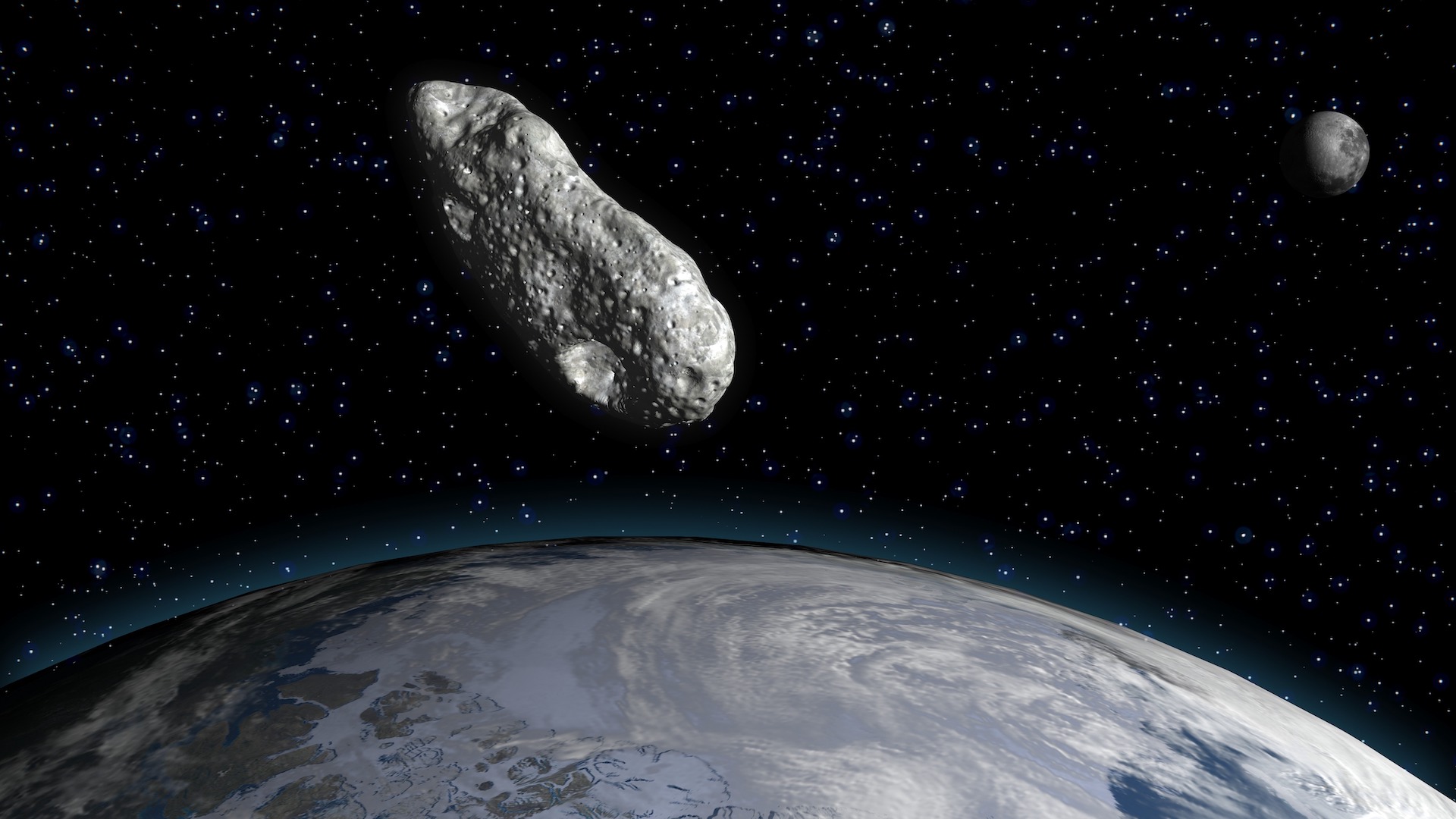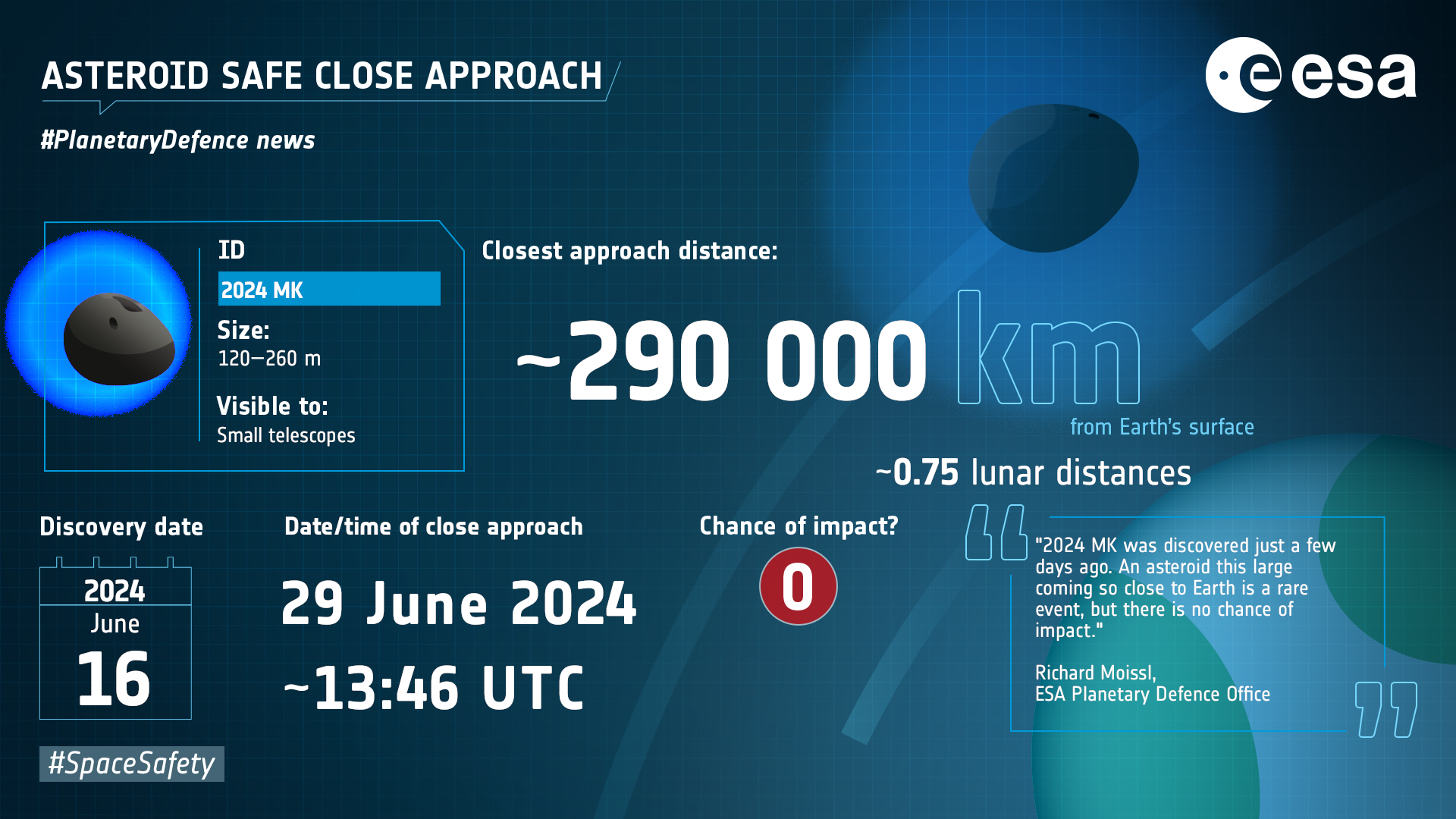
A skyscraper-size asteroid discovered two weeks ago will zoom between Earth and the moon on Saturday (June 29). At its closest approach, the space rock will pass within roughly 184,000 miles (295,000 kilometers) of our planet — about three-quarters the average distance between Earth and the moon.
The asteroid, named 2024 MK, is estimated to measure about 480 feet (146 meters) across, which is greater than the height of a 40-story building or the Great Pyramid of Giza.
During its closest approach, it will be traveling at roughly 21,000 mph (34,000 km/h), according to NASA. Astronomers in South Africa discovered the asteroid on June 16.
Although the hefty space rock poses no threat to Earth, NASA classifies it as a "potentially hazardous asteroid" due to its large size and precarious orbit, which occasionally crosses that of our planet. Shortly after its close approach to Earth and the moon this weekend, 2024 MK will zoom back out toward the asteroid belt between Mars and Jupiter, and will not return to our neighborhood until 2037, according to NASA predictions. (The space rock won't pose any threat to our planet then, either.)
Related: NASA's most wanted: The 5 most dangerous asteroids to Earth
NASA monitors the orbits of more than 35,000 near-Earth objects (NEOs), which are space rocks that come within 120 million miles (195 million km) of the sun, often crossing Earth's orbit during their travels. Currently, there are no known asteroids that pose a threat to our planet for at least the next 100 years.

The close approach of 2024 MK comes just days after an even larger asteroid called 2011 UL21 blasted past our planet. Measuring between 1.1 and 2.4 miles (1.7 to 3.9 kilometers) wide, the mountain-size object flew by at 4.1 million miles (6.6 million km) from Earth, or about 17 times the distance to the moon. Despite this ample breathing room, 2011 UL21 was the largest asteroid to come that close to Earth in 110 years, according to the Virtual Telescope Project, which livestreamed the encounter Thursday (June 27).
These back-to-back flybys fittingly precede World Asteroid Day, which is celebrated on June 30. That date is also the anniversary of the 1908 Tunguska asteroid impact, which demolished an estimated 80 million trees in Siberia over 830 square miles (2,150 square kilometers).







